Germany may not be the first country that comes to mind when you think of a seaside holiday destination, but that’s exactly what I discovered during my recent visit to Ruegen Island. Located in the state of Mecklenburg-Western Pomerania, Ruegen Island is Germany‘s largest island and it draws holidayers for a lot more than just its beaches. During my visit, I got to hike along chalky cliffs, watch live outdoor theatre, ride in some unique modes of transportation, and drive the island’s “tree tunnels” – beautiful stretches of road covered in a thick foliage of trees. Here’s a little recap of what that looked like:
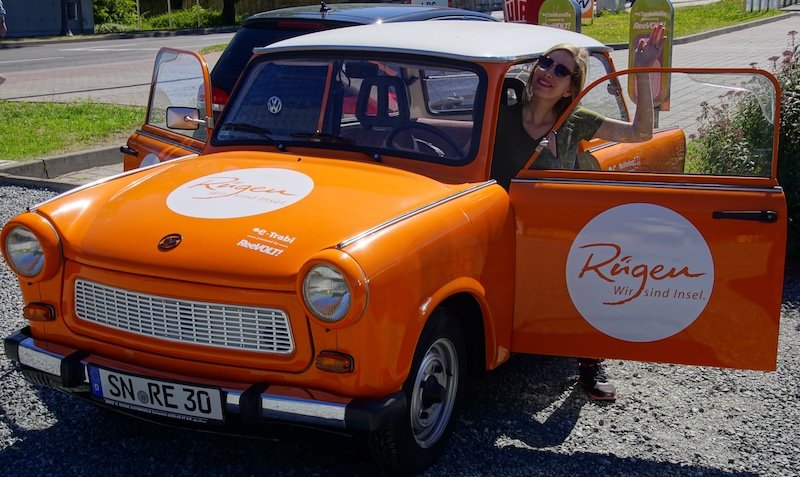
Ruegen Island Travel Guide: Top Things to Do, See, Eat, Drink & Experience on Ruegen Island, Germany!
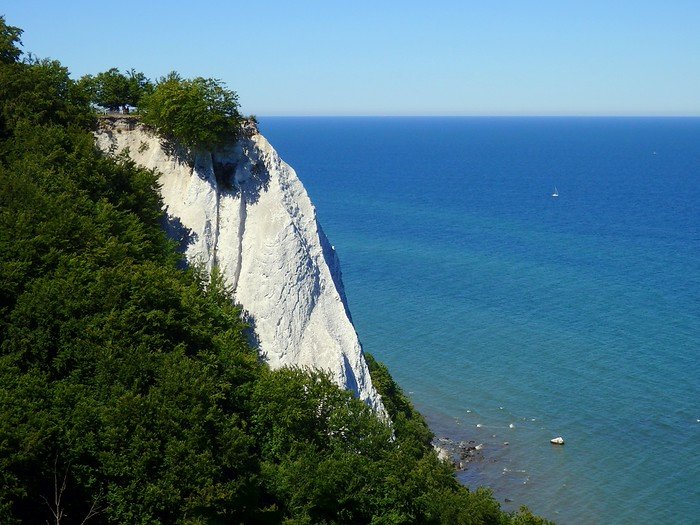
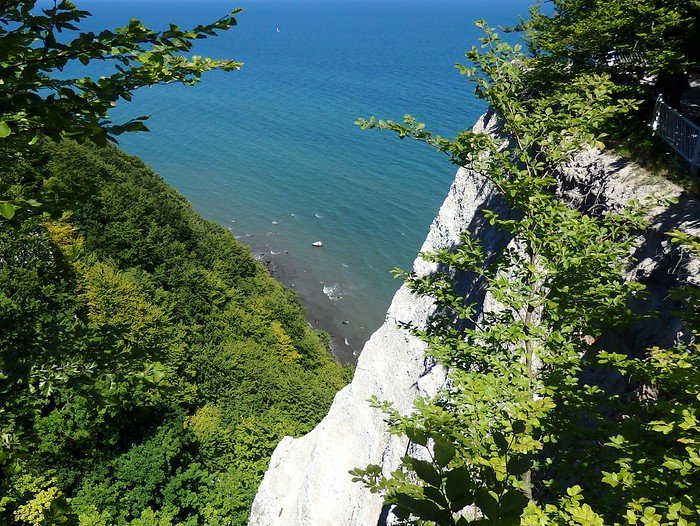
Hiking the white chalk cliffs of Jasmund National Park
When it comes to natural wonders, Ruegen Island does not disappoint. Located on the northeastern tip of the island, you’ll find Jasmund National Park, a place where the white chalk coastline tries to play tricks with your eyes. Can it be? Is it real?
If you’ve ever visited the Cliffs of Dover in England, or Møns Klint in Denmark, then you’ll know exactly what I’m talking about. These white chalk cliffs rise up along the coastline and make for one of the most beautiful sights you’ll ever witness. As it turns out, England and Denmark aren’t the only places where you can see this marvel – Germany’s Ruegen Island has just as spectacular a coastline.
The two main lookout points in Jasmund National Park are Koenigsstuhl, which translates to King’s Chair, and Victoria-Sicht, which means Victoria’s View. The walk to Victoria’s View makes for a nice stroll through the forest, and then there’s also a turnoff where you can walk down to the pebbly beach below so you can enjoy the cliffs from a different vantage point.
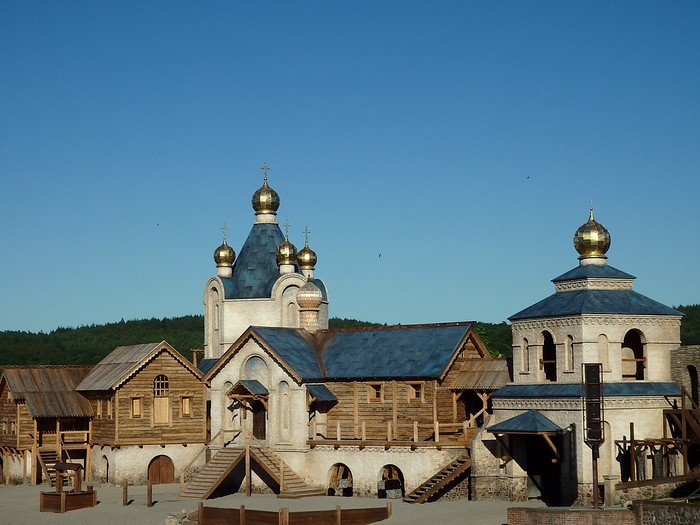
Watching a medieval play at the Stoertebeker Festspiele
If you ever visit Ruegen Island in the summertime, you won’t be able to drive more than a few hundred meters without seeing posters of a handsome young man, dressed in medieval clothes, with blond locks flowing down to his shoulders. These posters advertise the Stoertebeker Festspiele, which is an open air theatre that takes places on a massive outdoor stage right by the water.
The play is set in the medieval period and it includes something for all ages – love, betrayal, sword fights, and even a few explosions. The story and the characters change every summer, and that’s one of the reasons people keep coming back for more. And that’s the other thing, people flock to this event by the thousands! I was shocked when I saw the number of seats (over 8000!) available and I wondered if they’d be able to fill them considering the size of the towns and villages on the island, however, the Stoertebeker Festspiele is such a well-known event that visitors make the drive not just from around the island, but also from the surrounding mainland.
The play was in German so we didn’t quite follow the whole storyline, but the sword fights and the pub brawl kept us entertained.
Also, as a tip, if you ever find yourself in Ruegen and plan to attend this festival, bring a blanket and hoodie to keep warm. The summer nights can get quite chilly and I kept wishing I’d worn something warmer the whole performance.
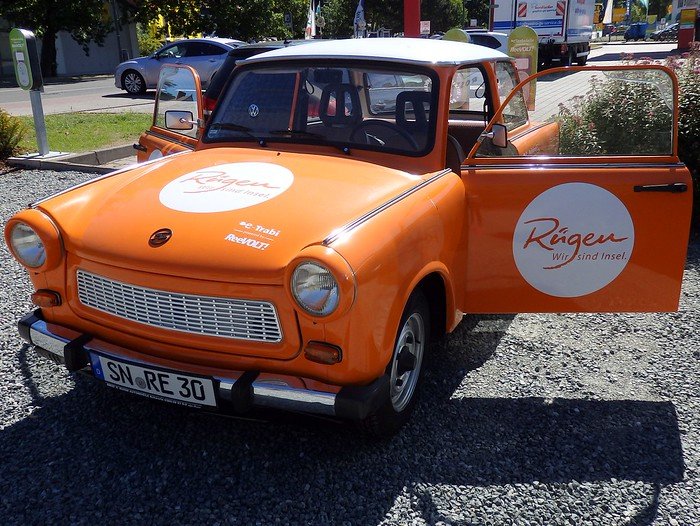
Riding in a Trabi from the former GDR
Having minored in German Studies when I was in university, I spent several weeks studying Ostalgie, a unit that covered the nostalgia for East Germany that developed years after the wall came down.
To give you a quick background on the topic (I am a teacher after all!), after WW2, Germany was divided into 4 occupation zones, and eventually into West Germany and East Germany. Two very distinct cultures developed as a result of this division. East Germany was influenced by the Soviets, while West Germany was completely open and influenced by the rest of the Western world.
One of the unique aspects of East German culture was the cars they drove, or I should say ‘car’ because almost everyone had a Trabant. This was a car that you had to wait about 15 years to receive and it was also known to be one of the least reliable cars out there. They were constantly breaking down and people were always having to find creative ways to repair them.
Once the wall came down and East Germany and West Germany were once again reunified, most East Germans sought to upgrade their vehicles. The Trabant was considered a thing of the past, that is until Ostalgie kicked in. It wasn’t too long before some East Germans started longing for the things of the past, items that were only available in the former German Democratic Republic, which was now quickly becoming more and more Westernized. The Trabant, affectionately known as the Trabi, suddenly saw a resurgence in popularity. It became a car that people wanted to drive and you can still see in on the streets today 25 years after reunification.
And that’s why I was so excited to get to ride in a bright orange Trabi while I was in Ruegen Island! This old Trabi had been converted into an eTrabi with an electric engine, and even though I wasn’t the driver, it was still a lot of fun riding in one simply because of all the history behind the car.
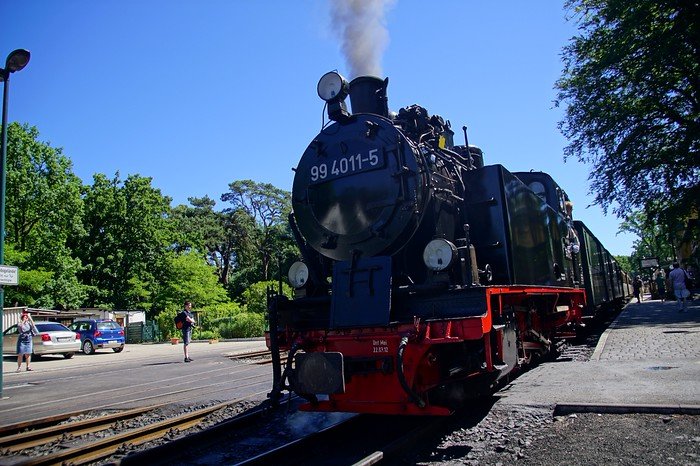
Travelling aboard the Rasender Roland
I know I’m sounding like a total transportation enthusiast here, but indulge me a little, will you? Now I’m going to tell you about a really cool train because if you ever find yourself in Ruegen Island you won’t want to miss riding the Rasender Roland. This is an old fashioned steam engine train that runs between Putbus and Goehren.
For many locals this was once a commuter train to travel between the towns along the southern part of the island, these days, however, the route has gained a lot of popularity with vacationing tourists who want to ride along this scenic route. The tracks run past farms and wooded areas, and it’s a slow and easy ride for all ages.
An alternative if you prefer something a bit more active is to hike the path through the woods that runs along the train tracks. That way you still get to enjoy nature and see the steam engine train in action.
A local was later telling me that sometimes there are special music events put on where you ride the train to the forest, people bring their picnic baskets, and then when you arrive, musicians are already playing live music. Could there by anything more idyllic than that?

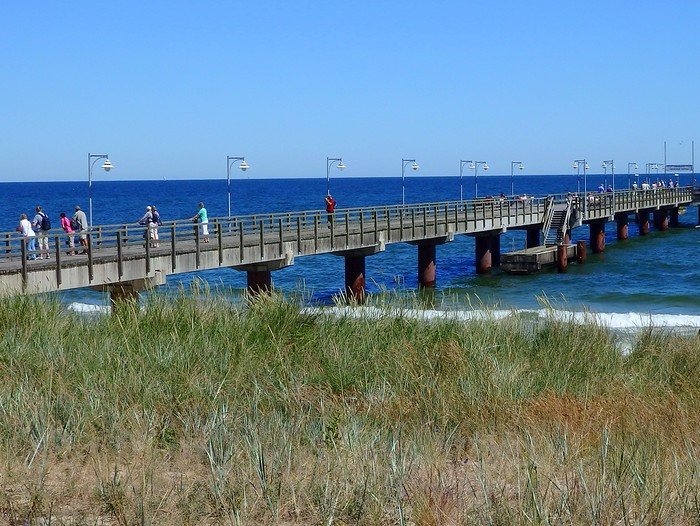
The beaches in Goehren
Ruegen Island wouldn’t be considered a summer destination if it didn’t have beaches, and the seaside town of Goehren offers precisely that. I only had half a day in the town, so I can’t give you the full scoop on all the sights, but I can tell you that it has a nice seaside promenade with some lovely stretches of sand. (The place reminded me of some of the Baltic seaside towns that I visited in Finland last summer!)
One of the things I found most interesting about the beaches was seeing the Strandkorben (double beach chairs that offer a little cover from the wind). Prior to visiting the northern parts of Germany, my mom who used to live in Hamburg, had told me about windy summers by the Baltic Sea – summers that involved sitting in a Strandkorb, bringing a book down to the beach, and perhaps even draping a blanket over your legs while you stared out at the sea.
Well, I happened to be visiting during an unusual heat wave so blankets were not necessary, but it was still cool seeing the Strandkorben all lined up on the sand.
Where to stay in Ruegen Island
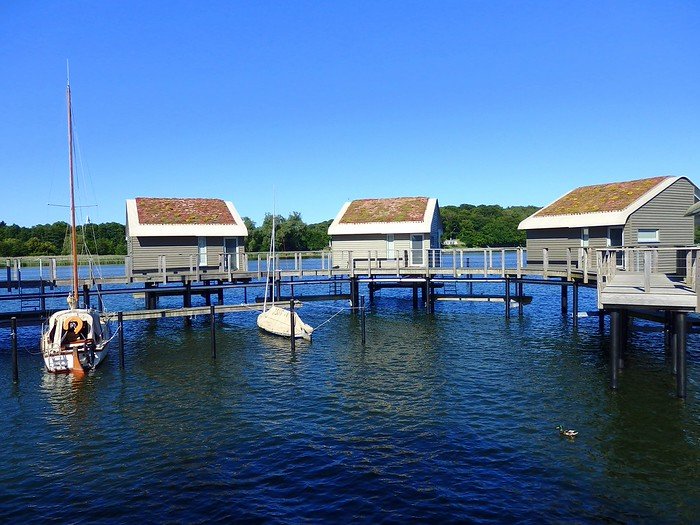
While in Ruegen Island I stayed at , which offers really unique accommodations in the form of apartments built on stilts over the water. It was pretty cool falling asleep with the moonlight streaming in through the windows, and simultaneously hearing the sound of the water lapping against the pier and the sailboats in the harbour.
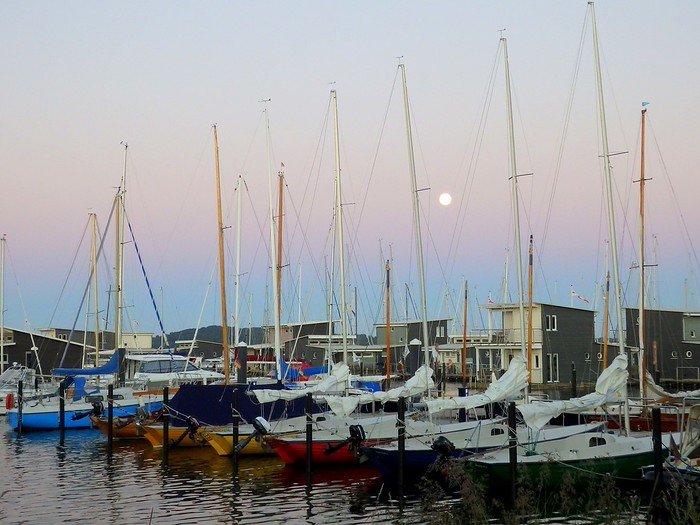
This trip was planned in partnership with the German National Tourism Board as part of their #JoinGermanTradition campaign which seeks to highlight unique customs and traditions across Germany.
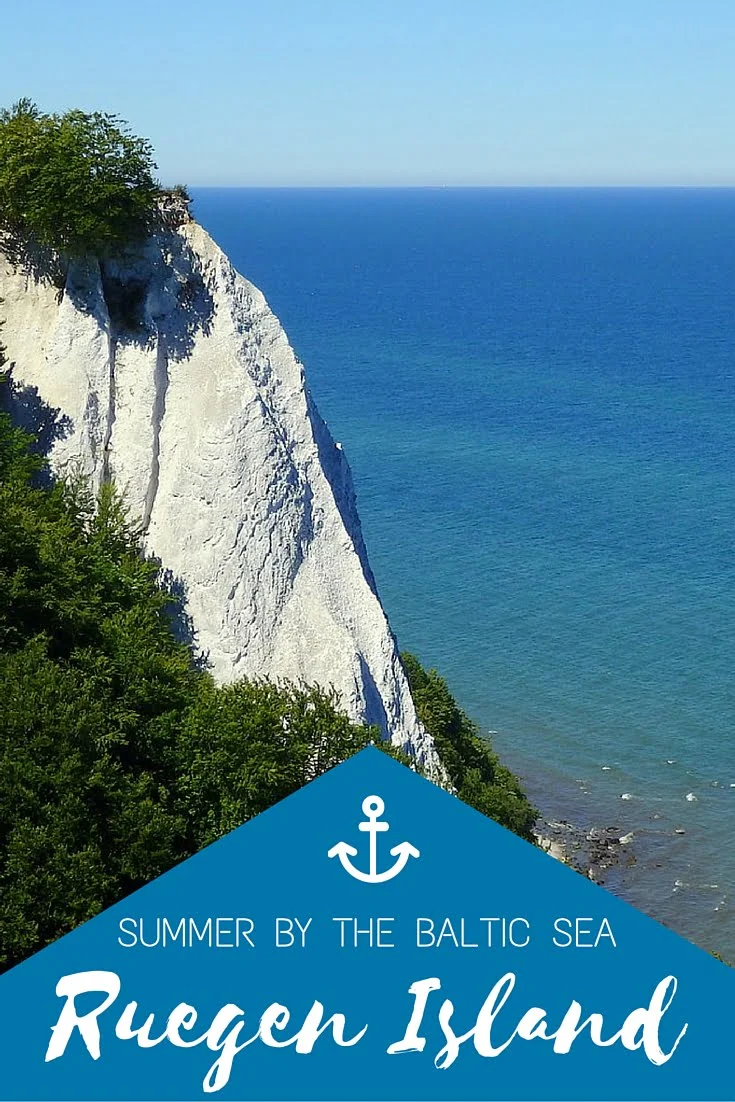
Rügen Island Travel Planner: Practical Tips, Mini-Itineraries, and Handy Checklists
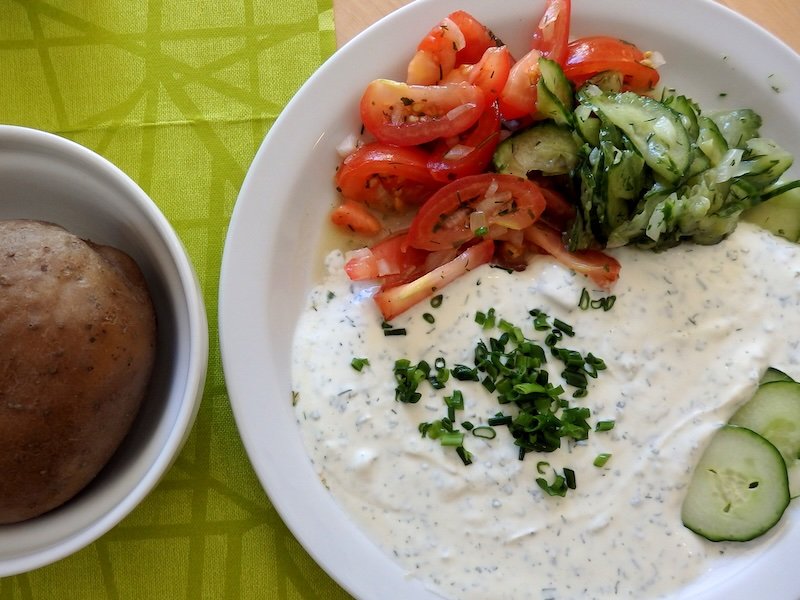
Where to Base Yourself on Rügen
Choosing a home base on Rügen is half the battle. Each area has a little personality of its own—think elegant seaside promenades vs. fisherman-village vibes vs. chalk-cliff gateways. Here’s a quick comparison to help you pick your spot:
| Base Area | Best For | Vibe | Don’t Miss | Pros | Cons |
|---|---|---|---|---|---|
| Binz | First-timers, classic seaside promenades | Belle-Époque resort town, long sandy beach | Kurhaus, Schmachter See sunset, Strandpromenade | Many dining options, central for day trips | Busy in peak summer |
| Sellin | Iconic pier lovers | Pretty villas + famous Seebrücke Sellin | Pier sunrise, South/North beaches | Postcard views, easy hop to Baabe & Göhren | More steps/gradients to reach the beach |
| Göhren | Beach time + Mönchgut peninsula walks | Relaxed, family-friendly | North & South Beach, Mönchgut hikes | Great for Strandkörbe days, Rasender Roland stop | Slightly farther to Jasmund |
| Sassnitz | Chalk-cliff access & Jasmund NP | Fisherman-port charm | Königsstuhl Visitor Center, Victoria-Sicht | Closest to white-cliff trails | Pebbly shoreline (not sandy) |
| Putbus / Lauterbach | Quiet base + quirky stays over water | Noble squares, marina life | Putbus castle park, marina boardwalks | Easy Rasender Roland access, boat trips | No big beach right in town |
| Kap Arkona / Putgarten | Lighthouse + coastal scenery | Windy headland + village charm | Twin lighthouses, Vitt hamlet | Dramatic cliffs + Baltic panoramas | Exposed to weather, can be blustery |
| Hiddensee (car-free isle) | Slow travel & bikes | Dune landscapes, thatched cottages | Dornbusch lighthouse, sandy sweeps | Peaceful, no cars | Access via ferry; day trippers surge |
My take: If your heart is set on chalk cliffs, Sassnitz is supremely practical. If you want the classic “German seaside” look with cafe-lined promenades and a long sandy beach, go Binz or Sellin. For space to breathe, Göhren on the Mönchgut peninsula is a lovely happy medium.
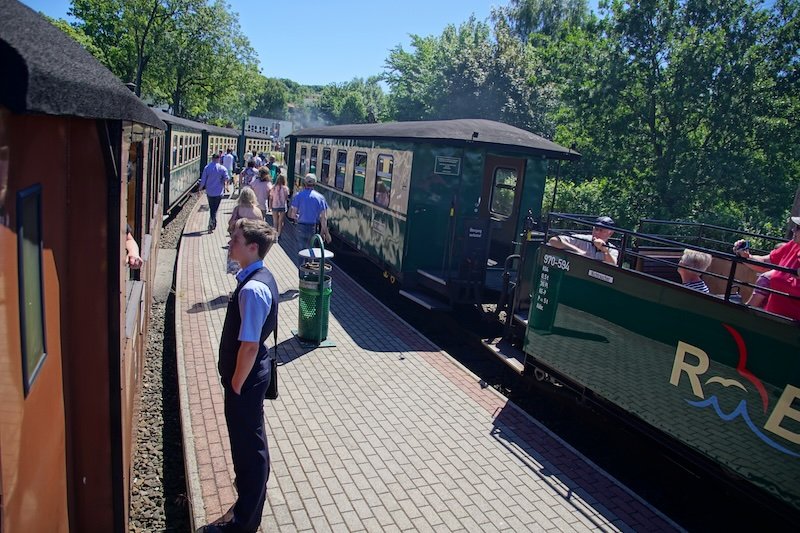
Getting Around: Car, Train, Bike…or a Steam Engine
Rügen’s logistics are wonderfully old-meets-new. Pick the mix that fits your style:
By Car
- Why it’s handy: Maximum freedom and those magical “tree tunnels” (Alleenstraßen) are dreamy to drive.
- Watch for: Narrow lanes, cyclists, beach traffic in July–August, and paid parking near piers and parks.
- Good to know: A smaller car makes coastal village parking so much easier.
By Rail & Bus
- Mainline trains reach Stralsund/Bergen auf Rügen; from there, regional trains/buses fan out.
- Rasender Roland (Putbus–Binz–Sellin–Göhren): a scenic heritage line you can use for sightseeing and transport. It’s slow, charming, and perfect for mixing a beach day with nostalgic chugs between towns.
By Bike
- Rügen is crisscrossed with coastal and forest cycle paths. Many seaside promenades have parallel bike routes.
- Rental tip: Ask for a lock + lights; coastal fog can roll in earlier than expected.
Boats & Ferries
- Summer boats link Lauterbach, Sellin, Binz, Göhren and out to Hiddensee. Bring a jumper for the breeze, even if the sun says otherwise.
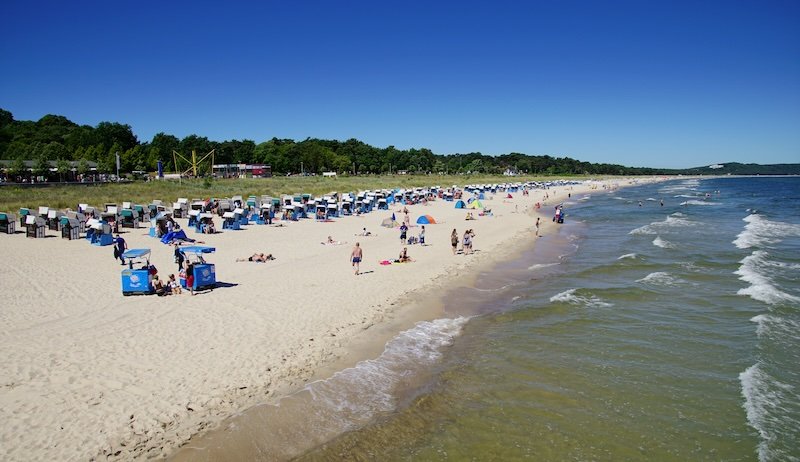
Beach Cheat-Sheet: Where to Lay Your Towel (and Grab a Strandkorb)
You’ll notice the Strandkörbe—those hooded wicker beach chairs—lined up like sentries. They’re perfect for windier days (aka many days on the Baltic) and a very “when in Germany” thing to rent.
- Binz Beach: Long, golden, and perfect for a promenade stroll followed by a lazy Strandkorb afternoon.
- Sellin North/South Beaches: The pier steals the show. Come early for sunrise when the water is glassy and the light is pink.
- Göhren: North Beach is great for families; South Beach feels wilder and pairs nicely with Mönchgut hikes.
- Prora: A dramatically long sweep of sand with a curious historic backdrop. Ideal for longer beach walks.
Swimming note: The Baltic here is shallow and typically calm, but it can be fresh! If you run cold (hi, it’s me), a quick dip + Strandkorb cocoon is a winning combo.
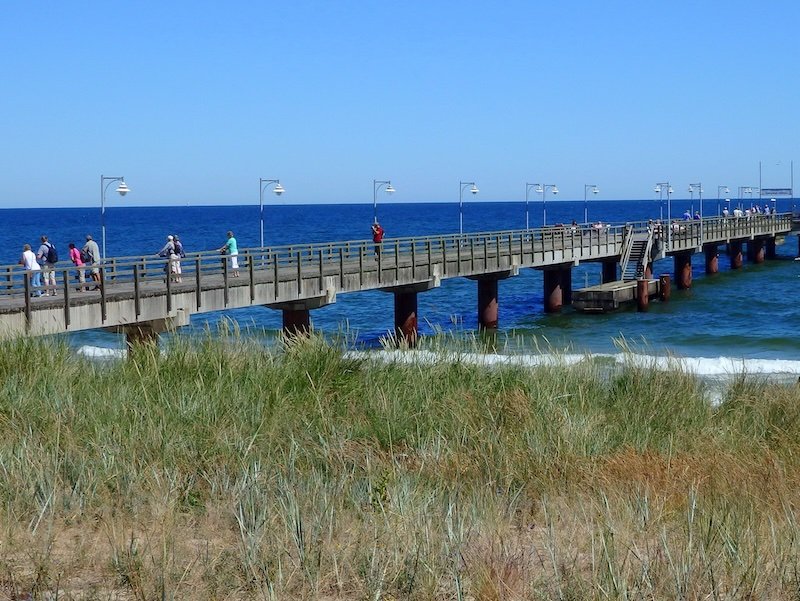
Easy Nature Days: Hikes & Viewpoints That Won’t Eat Your Whole Day
Jasmund National Park (Sassnitz)
- Musts: Victoria-Sicht (gentle forest stroll; big reveal), Königsstuhl overlook (visitor center nearby).
- Trail Tip: Drop down to the pebble beach (check conditions) for that full white-cliff-meets-turquoise-water drama. Wear grippy footwear; chalk dust + pebbles = slippery.
Mönchgut Peninsula (Sellin–Baabe–Göhren)
- Low, rolling landscapes, reed beds, and sea-meets-meadow views. Carry a picnic and meander—you’ll stumble on perfect, quiet coves.
Granitz Beech Forest
- Hunting Lodge Granitz (Jagdschloss): climb the cast-iron staircase for a 360° view over beaches, lagoons, and villages. It’s a leg-burner with a prize at the top.
Kap Arkona & Vitt
- Twin lighthouses, steep coast, and that windswept “edge of the map” feeling. Walk down to Vitt, a tiny thatched-roof hamlet in its own time warp.
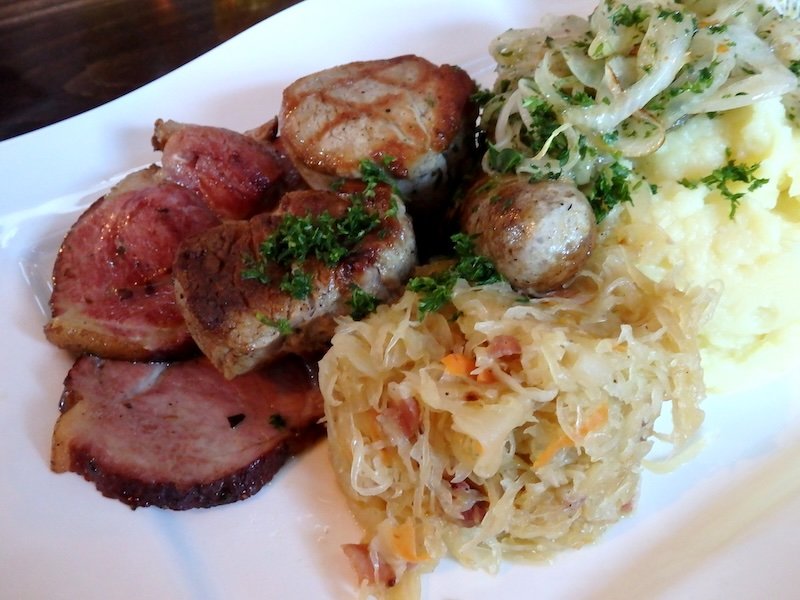
Food & Drink: What to Order (and Where to Snack Without Thinking)
You’re on an island; lean into the fischbrötchen life.
- Fischbrötchen (fish rolls): Herring (Bismarck/Matjes), smoked mackerel, or salmon with pickles/onions. Perfect pier food.
- Räucherfisch (smoked fish): You’ll see smokehouses near harbors—follow your nose.
- Sanddorn (sea buckthorn): Tangy-citrus everything—tea, juice, cakes. When in the Baltic, right?
- Kuchenpause: Afternoon coffee + cake is practically mandatory. Try a Sanddorn cheesecake or a seasonal fruit tart.
Budget tip: Beach kiosks and harbor shacks keep lunches very reasonable. Save your splurge for a waterfront dinner in Binz or a tasting menu near Sassnitz.
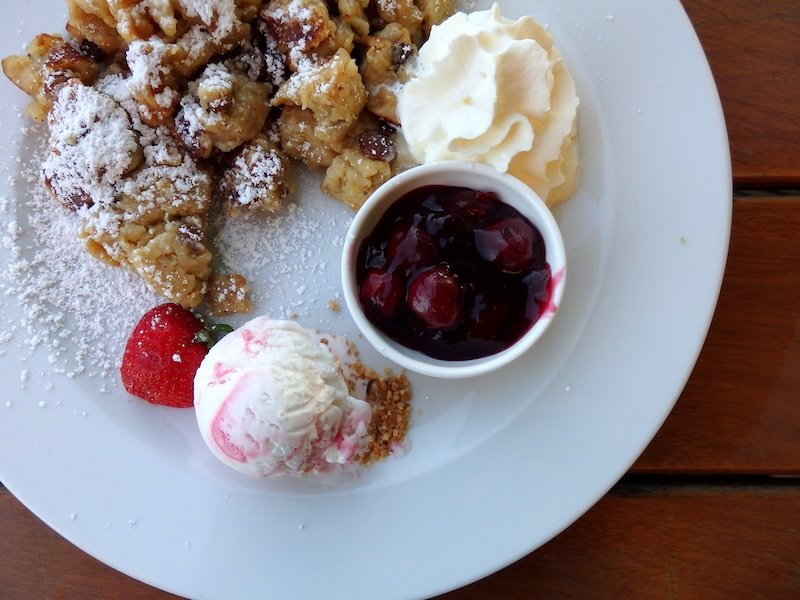
Two Easy Mini-Itineraries (Steal, Swap, Save)
3 Days on Rügen (First-Time Highlights)
Day 1 – Binz & Sellin
- Morning: Coffee on the Binz promenade, beach walk.
- Midday: Granitz Lodge—climb for the views.
- Late afternoon: Sellin Pier for photos, blue hour, and dinner with a pier view.
Day 2 – Jasmund & Sassnitz
- Morning: Victoria-Sicht and forest walk (pack snacks).
- Midday: Königsstuhl visitor center; optional descent to pebbly beach (check trail status).
- Evening: Harborside dinner in Sassnitz; try smoked fish and Sanddorn dessert.
Day 3 – Göhren & Rasender Roland
- Morning: Strandkorb time in Göhren (North Beach).
- Afternoon: Ride Rasender Roland to Sellin or Binz; hop off for ice cream + promenade stroll.
- Sunset: Back to Göhren for a mellow beach sunset.
5 Days on Rügen (Add Scenery & Stories)
Day 1: Binz arrival + beach + Granitz Lodge
Day 2: Full Jasmund loop (Victoria-Sicht, Königsstuhl, Sassnitz harbor)
Day 3: Kap Arkona lighthouses + Vitt village + Putgarten wander
Day 4: Göhren base + Mönchgut peninsula hike + Strandkorb reading day
Day 5: Störtebeker Festspiele night. Daytime beach or Sellin/Baabe; evening blanket, hoodie, and your best “brave pirate” spirit.
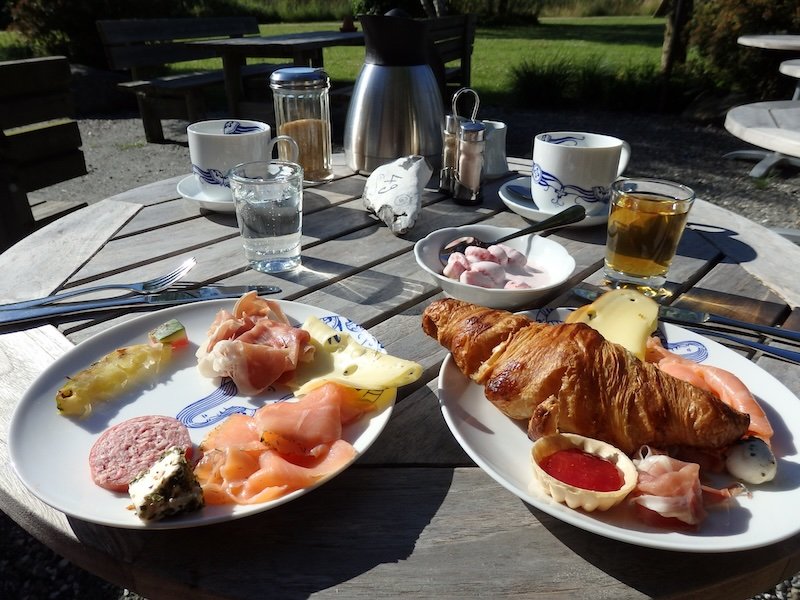
Seasonal Smarts: When to Visit & What to Expect
- June–August: Warmest temps, buzzing seaside towns, longest days. Expect crowds in July–August (book early).
- May & September: Shoulder-season sweet spot—mild weather, easier reservations, still beachable with a sweater.
- Evenings: Chillier than you think (Baltic breeze!). A light puffer or fleece earns its suitcase space.
- Sea Temp: “Refreshing.” If you’re cold-blooded, pack a quick-dry towel and warm layers for post-swim.
What to Pack for a North-German Beach Holiday (Yes, Even in Summer)
Beach & Daywear
- Swimsuit (two, if you’re a beach-all-day person)
- Quick-dry towel or Turkish towel
- Light cottons/linens for town and promenades
- Sun hat + sunglasses
- Packable rain jacket or windbreaker (Baltic breeze is real)
Footwear
- Comfy walking shoes (forest trails + piers)
- Sandals you can kick on/off for Strandkörbe life
- Light hikers if you plan to descend to pebbly beaches
Nice-to-Haves
- Reusable water bottle (fill up at your accommodation)
- Picnic kit (foldable knife, napkin, tote)
- Power bank (long days out)
- Binoculars (cliffs, lighthouses, and that ship on the horizon)
For Störtebeker Festspiele Night
- Blanket or travel throw
- Hoodie/fleece (even in “heat waves”)
- Snacks (keep it quiet—think chocolate, nuts, fruit)
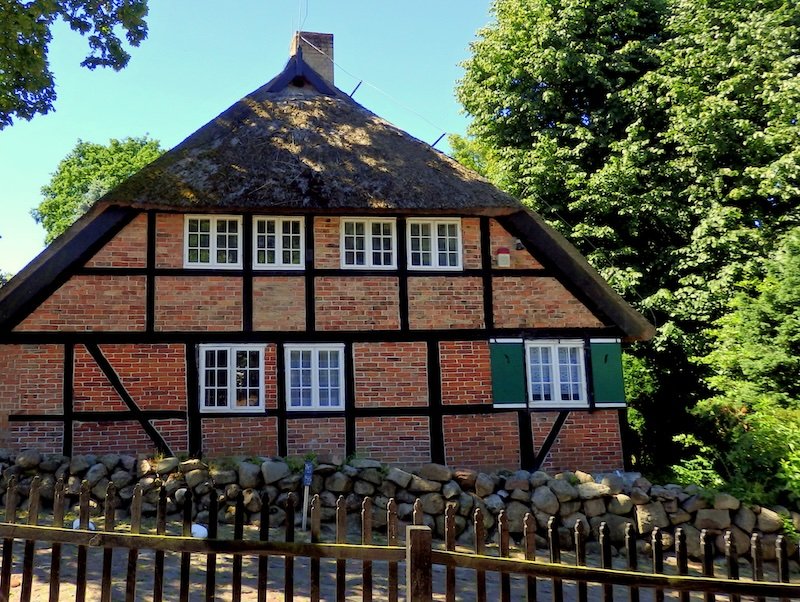
Responsible Travel on Rügen (Gentle Reminders That Matter)
- Stay off cliff edges and heed closures—chalk coasts are fragile and erosion happens.
- Take the steps/official paths down to beaches; don’t scramble across dune grasses.
- Carry it in, carry it out: Beaches and forests are pristine—let’s keep them that way.
- Give wildlife space: Especially on quieter Mönchgut stretches.
- Support local: Smokehouses, bakeries, family-run Strandkorb rentals—your euros make a difference.
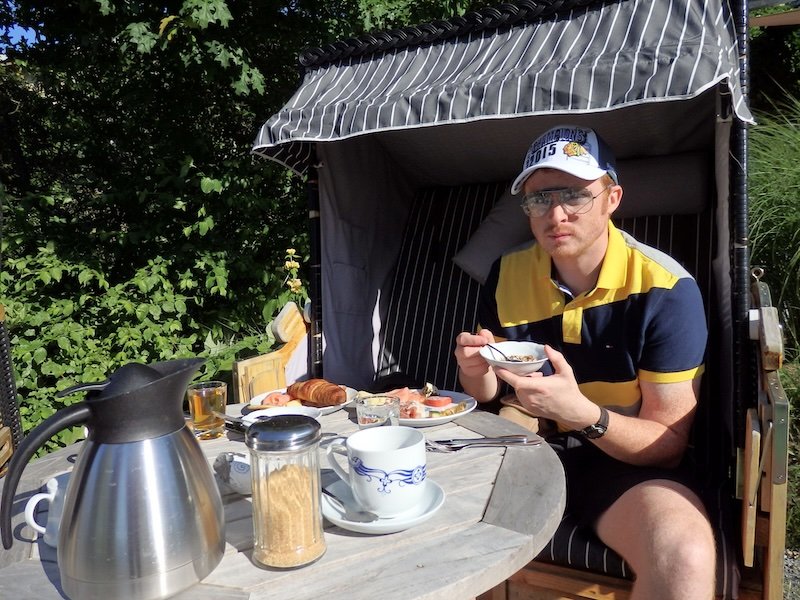
Budget Snapshot (Very Rough, but Helpful)
- Strandkorb rental: ~€10–€20 per day (varies with location/season)
- Fischbrötchen lunch: €3–€7
- Cafe & cake: €6–€10
- Casual dinner mains: €14–€24
- Rasender Roland ride: modest fare; consider return tickets for savings
- Königsstuhl visitor center: paid entry; check combo options if you’re visiting multiple sites
Rainy Day Plan (Because Coastal Weather Has Mood Swings)
- Museums/centers: Königsstuhl visitor center (Jasmund), local history in Binz, or tidy maritime exhibits in harbors.
- Cafe-hop: Baltic cake research is a serious calling.
- Spa day: Many seaside hotels offer day spa passes—sauna + stormy sea views is peak cozy.
- Train ride: Rasender Roland is extra atmospheric in mist.
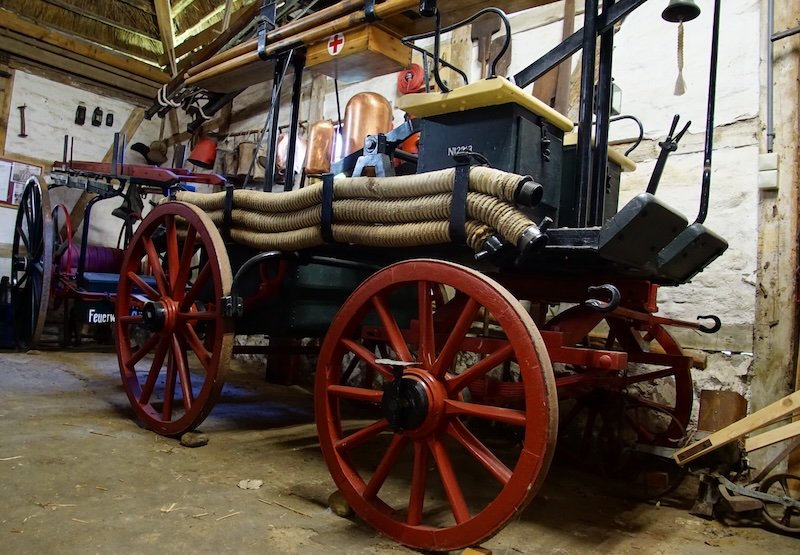
Rügen Island Trip: 12-Question FAQ
When is the best time to visit Rügen for beaches and hiking?
Late June through early September offers the warmest weather and the longest days, perfect for beach time and forest walks. May and September are lovely shoulder months with milder temps, fewer crowds, and lower prices, but evenings can be cool and breezy, so bring layers.
Which base is best if I want to see the white chalk cliffs?
Sassnitz is the most convenient base for Jasmund National Park, with short drives or bus links to Victoria-Sicht and the Königsstuhl visitor center. If you prefer a sandy beach vibe and don’t mind a slightly longer commute, Binz or Sellin work well too.
Can I swim almost anywhere along the Baltic coast on Rügen?
You’ll find designated swimming zones along the big resort beaches—Binz, Sellin, Göhren, and Prora. The Baltic here is generally calm and shallow, but it’s cooler than the Mediterranean. Pebbly stretches below the chalk cliffs are scenic but not ideal for swimming; stick to signed beach areas with lifeguards in summer.
How do I rent a Strandkorb (hooded beach chair), and do I need to book?
On busy beaches there’s a kiosk or attendant with numbered Strandkörbe—just pick a free one and pay by the hour or day. In peak season and on sunny weekends, arrive earlier in the morning to snag a front-row seat, especially in Binz and Sellin.
Is the Rasender Roland steam train worth riding if I’m short on time?
Yes—do a short hop between, say, Binz and Sellin or Sellin and Göhren. It’s slow, nostalgic, and scenic, and it doubles as transport. If you have an extra hour, pair the ride with a beach stroll or pier visit to make it a complete mini-outing.
How do I get tickets for the Störtebeker Festspiele and what should I bring?
Tickets can be purchased online in advance or at the on-island box offices. Seats go fast in July–August. Bring a blanket, a warm layer, and maybe a thermos or snacks; it’s an outdoor evening performance right by the water, and temperatures can dip.
Are there easy hikes suitable for families with kids?
Yes—Jasmund’s forest paths to Victoria-Sicht are gentle and well-marked, the Granitz beech forest has wide trails, and Mönchgut offers rolling, lowland paths by the sea. Always keep kids on designated trails near cliffs and follow local safety signs.
What should I wear for a summer visit—do I really need a jacket?
Pack summer clothing for daytime, but absolutely bring a windbreaker or light puffer for evenings. The Baltic breeze is cool, especially at sunset, on ferries, and during outdoor theatre nights. A scarf and light beanie never go unused in my bag.
Can I visit Hiddensee as a day trip from Rügen?
Yes—ferries in summer connect Rügen (e.g., Schaprode or Lauterbach) to the car-free island of Hiddensee. Rent a bike when you arrive, ride to Dornbusch lighthouse, and enjoy the dunes and long beaches. It’s a slower pace and a lovely change of scene.
Are there any safety considerations around the chalk cliffs?
Chalk cliffs erode and can be unstable. Heed all trail closures and safety signage, stay behind fences, and keep back from edges even for photos. Use official access points for the pebble beaches and avoid walking under overhangs when conditions are wet or windy.
Is Rügen easy to explore without a car?
You can do a lot with regional trains, buses, the Rasender Roland, and ferries—especially if you base yourself in Binz, Sellin, Sassnitz, or Göhren. To reach more remote viewpoints and hop quickly between spots, a car is convenient, but not essential if you don’t mind slower, scenic travel.
What local foods should I try on Rügen?
Start with fischbrötchen (fish rolls) from a harbor stand, Räucherfisch (smoked fish) from a smokehouse, and anything Sanddorn (sea buckthorn)—teas, juices, and cakes. Save room for afternoon Kaffee und Kuchen; a seaside slice with Baltic views is a delicious Rügen tradition.
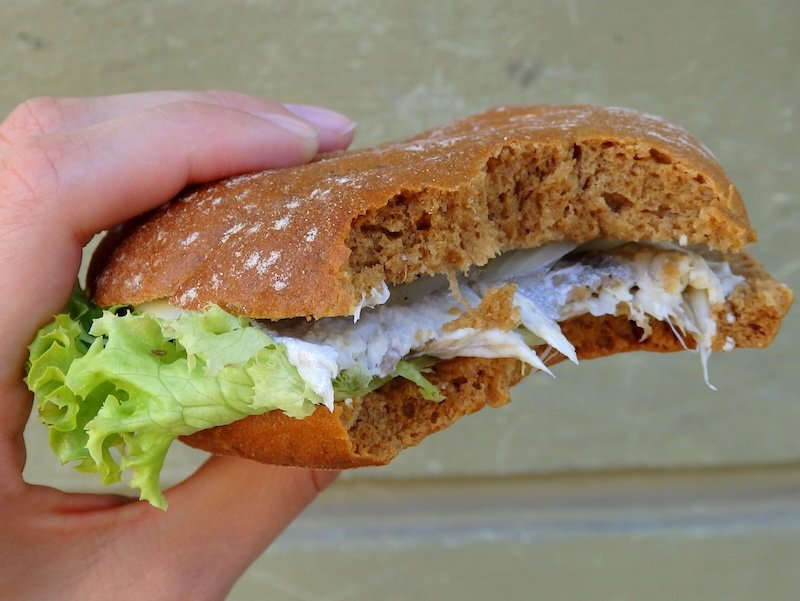
Have you visited the Baltic Sea in the summertime?
Any favourite destinations to share?

Such a beautiful place. Thanks for sharing 🙂
http://www.vonnydu.com
So neat — never heard of Germany’s beaches, but these look pretty neat 🙂 Also, ostalgie sounds fascinating — I am originally from Russia, where there is quite a bit of nostalgia for all things Soviet, except for cars…maybe because Soviet brands have now become RUssian and are still made today, and still aren’t terribly reliable 🙂
You’re right! When I think of Germany, I certainly don’t think of beaches. It looks lovely though!
Loving your Germany posts, as I’ve never heard of any of these places before. And I especially love the little history lessons — I am a former teacher and a lifelong history nerd, so those little snippets always appeal to me 🙂 Looking forward to reading more, and I am filing all of this away for a potential Germany and Austria trip next spring!
xx
I love your new website! So lovely 🙂
And I am glad you made it to South Africa!
That’s my ‘hood..:D
It is truly beautiful
Wow! Ruegen Island looks really gorgeous. Love all the photos, especially the one with blue rooftops and the last one – moon and the harbor.
Audrey, that’s a fantasic post!! I am from Mecklenburg-Western Pomerania, just live 100km away from Rügen Island but also at the coast, and it’s great to see your pictures and to read about our history. It is/was exactly as described. Did you also take a swim in the Baltic Sea or was it still too cold? 🙂 As I heard from my family and friends it was pretty hot over there when you were there. Lucky you! Again, thanks for sharing your Rügen experiences with us! Safe travels!
Such an awesome place. I had no idea! It’s on my list now, thank you!
The white calc cliffs are really nice and on their bottom you can look for special formed stones etc. 🙂